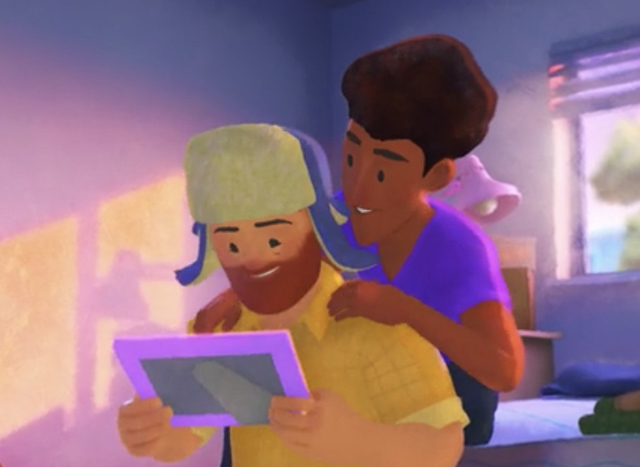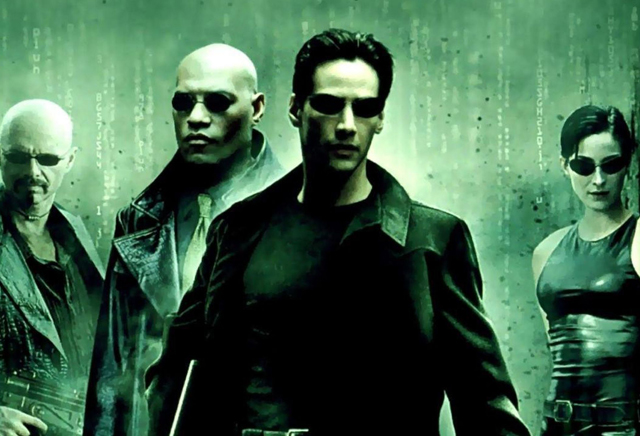
You’ve got to hand it to Keanu Reeves. The man is very good at remaining relevant as a movie star over the course of a nearly 40 year career. Often derided for not being the most versatile actor in the business, the man is nevertheless a good judge of projects to attach his name to. Starting off as one half of a goofy duo of dimwitted teenagers in Bill and Ted’s Excellent Adventure (1989), Reeves successfully made the jump to action movies with the box office hit Speed (1994). In an era when the action movie star fit a specific mold, mainly muscle bound stars like Arnold Schwarzenegger, Sylvester Stallone, and Jean Claude Van Damme, Keanu Reeves was very different. His more lean build allowed him to feel like a more natural, everyday hero than the He-Men that normally appeared on screen. But, even if Hollywood wasn’t satisfied with him yet as an action movie star, Keanu still proved to be a surprisingly forward thinking movie star. He wisely turned down appearing in the ill-fated sequel Speed 2: Cruise Control (1997), which proved to be one of the biggest box office disasters in history. Over the years, he’s also developed a reputation for being one of the nicest guys in the business; using his stardom to uplift others and creating a generally positive atmosphere on whatever set he works on. It’s probably why his recent success with the John Wick movies has been so fruitful, because so many of the best in the business wants to work with him. He may not be a Shakespearean level performer; though he has done that as well, appearing in Kenneth Branagh’s Much Ado About Nothing (1993) early on in his career. But, he has shown through his own example how best to exemplify the meaning of movie stardom and, more importantly, earn it as well. When looking at Keanu Reeves career as a movie star, many highlights come to mind, but the movies that will likely be what defines his place in the annals of movie history are the films in the Matrix series.
It can’t be understated how earth shattering The Matrix proved to be, not just as a film series, but as a cultural touchstone. The Matrix is one of the most oft quoted and referenced films in cinema history. It also sparked a revolution in visual effects, as audiences were wowed by new techniques that truly defied the laws of physics in a way thought unimaginable before. And it also sparked a renewed interest in new age philosophies and sociological theories. Not bad for an R-rated studio film that was dumped off in the box office wasteland of April. Initially, Warner Brothers didn’t have much faith in this film connecting with audiences, but afterwards it became a different matter. Suddenly they had a new IP that could take on the likes of Star Wars, which while The Matrix didn’t overtake the juggernaut at the box office, it ended up sweeping them in the awards season, with The Matrix winning a respectable 4 Oscars and Star Wars Episode I: The Phantom Menace going home empty handed. Of course, this kind of success demanded a sequel, and Warner Brothers called upon the filmmakers, The Wachowskis, to deliver. Instead of just one sequel, the Wachowskis convinced the studio to make two back to back. It’s not an uncommon practice, as Back to the Future shot two sequels back to back, and of course The Lord of the Rings trilogy was shot as a whole together. But the interesting thing about The Matrix was that both films would be released in the same year (2003 to be exact) and only months apart. It was ambitious to say the least, but Warners was confident that all the hype would deliver them huge results. While the two films didn’t exactly loose money, they also didn’t deliver as big as the studio hoped it would either. As a result, The Matrix would also prove to be a text book example of failing to harness lighting in a bottle a second time. Of course, that didn’t stop Warner Brothers from trying again almost 20 years later, and the result also spoke for itself. Still, The Matrix series is a fascinating oddity in film history, and examining each film offers some interesting insights into the ups and downs of building a franchise.
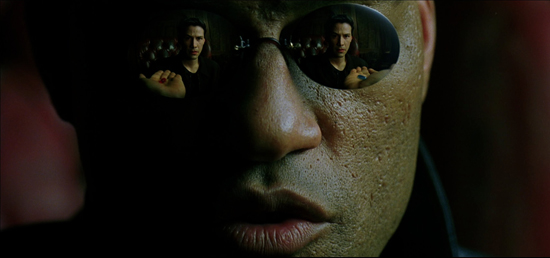
THE MATRIX (1999)
The one that started it all. Before The Matrix came along, The Wachowskis were still fairly new on the filmmaking scene. They had only made one film prior; the erotic thriller Bound (1996). But, their pitch for a cyberpunk thriller set in the virtual wonderland existing within the realm of the internet was ambitious to say the least. It also made the film a hard sell. What ultimately helped the Wachowskis sell their vision was getting the assistance of illustrators like Steve Skroce and Geoffrey Darrow, who together created nearly 600 storyboards and concept drawings for the filmmakers to show to interested parties. Eventually Warner Brothers gave them the green light and they were allowed to make their vision a reality, with a surprising amount of free reign. That amount of creative freedom proved to be useful for the directors, as they used their film to experiment with new filmmaking techniques. The most noteworthy technique, and the one that is today synonymous with The Matrix itself; bullet time. This was different from the slow mo we had been accustomed to in the movies. Here, the Wachowskis could freeze the action on screen and yet still move the camera around in a three dimensional action, creating a hyper-surreal visual on screen. This was accomplished by having the actors perform an action within a rig of cameras mounted in a circular ring around them. Each camera would snap a picture all at the same time, each from a different angle, and then the images would be combined together digital creating the illusion of movement around a static image. Of course, “bullet time” got it’s name from a specific moment in the film when it appears that Keanu Reeve’s Neo is moving so fast that he can literally dodge bullets. The were many other ground breaking effects, some of which look quaint over 20 years later and others that have held up pretty well. This stuff alone would’ve made The Matrix noteworthy, but the film was much more than that.
The story itself, about a mild mannered computer programmer named Thomas Anderson (Keanu Reeves) suddenly being thrust into a mind-altering adventure where he learns that the life he knew was all a simulated lie blew away many audiences minds when they first saw this film. The Wachowskis didn’t just make a movie; they started a conversation, about society, the meaning of life, what our identities are, and what responsibility we have over our use of technology. It helps that the Wachowskis assembled an ideal team to get their vision onto the big screen. Keanu Reeves was ideal for the role of Neo, the reawakened protagonist that was formally known as Mr. Anderson. Reeves limitations as a dramatic actor actually proves to be an asset in his performance here as his stilted demeanor gives Neo a more hard edge identity. But it’s not just Keanu that stands out. Carrie Anne Moss became an instant star with her scene stealing presence as Trinity, the skilled freedom fighter that recruits Neo. Laurence Fishburne completely re-invented his already varied career with his personification of the wise and steadfast Morpheus. And not to be overlooked, but Australian rising star Hugo Weaving delivered a truly unforgettable villainous turn as Agent Smith, one of the programs designed to keep order within the Matrix while having a sneaky agenda of his own. While Warner Brothers liked what they saw with The Matrix, they were also hesitant. An stylish R-rated, effects heavy film was not not an easy sell in the late 90’s, so they cautiously opened it up in a quiet Spring box office weekend. That strategy proved to be wise, as the film managed to stand out immediately and gain attention from audiences. By the end of that summer, even with a new Star Wars in theaters, people were still talking about The Matrix. It was immediately clear, The Matrix had started something new in Hollywood. Particularly when it comes to visual effects you could see the Matrix effect, as CGI took over in a much bigger way. The Matrix would also be parodied relentlessly in the next few years, particularly with variations on the “bullet time” effect. But, the question remained, what would the Wachowskis do next now that they had a film that changed the face of cinema as we know it.
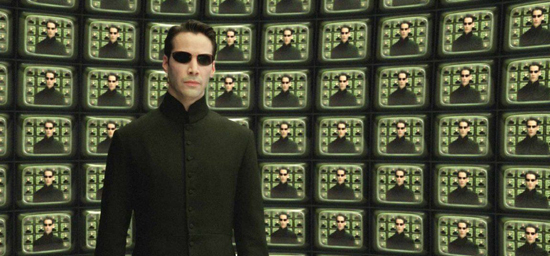
THE MATRIX RELOADED (2003)
It didn’t take long for a sequel to be assembled for a groundbreaking film like The Matrix, and like mentioned before, Warner Brothers granted the Wachowskis’ wish to film both movies back to back. Looking at the two movies that released months apart, it’s clear that the two were meant to be a continuous narrative broken into two parts. The Wachowskis wanted to keep expanding upon what they had built with the first movie, giving the world more definition than what we had seen before. For the first time, we would be seeing Zion, the stronghold of all the humans who had freed themselves from the Matrix. The cast would also be expanding, with actors like Jada Pinkett Smith, Harold Perrineau, Monica Bellucci, and Lambert Wilson taking on new important characters. By the time the movie was ready to release in theaters, the amount of hype was definitely at the peak for Matrix mania. The first film, The Matrix Reloaded, broke numerous opening weekend records, especially for an R-rated film, grossing an impressive $91 million. But even though the movie found financial success, the reception from audiences and critics became a different matter. It was almost universal that people felt Reloaded lacked the magic of the original film. While the production values in the action scenes were impressive, now that the Wachowskis were given the full confidence and support of Warner Brothers, people felt that they were too noisy and lacking in gravity. The whole film felt like a watered down version of the original movie. It also didn’t help that the movie seemed a little too self aware and up it’s own ass when it came to the philosophical elements of the movie. The scene where Neo meets the Architect (Helmut Bakaitis) particularly drove audiences nuts because they felt it ground the film to a halt in order for the Wachowskis to inject even more sermonizing about the nature of reality, which is not what most people came to these movies for. Despite The Matrix having the reputation of being a thinking man’s action film, the audiences unfortunately were unforgiving of a movie that was attempting to be too smart for the room. They just wanted to see Neo kicking more butt on screen. So, despite strong box office, Reloaded was ultimately greeted as a disappointment among fans. Which did not bode well for a third film.

THE MATRIX REVOLUTIONS (2003)
It seemed like every problem that plagued Reloaded upon release was carried over into Revolutions and amplified. To spread their vision across two movies, the Wachowskis likely struggled to figure out an interesting angle to build their character development on. Ultimately, and possibly pressured by Warner Brothers, they ultimately decided to play things safe. Neo’s journey to becoming “the One” doesn’t exactly deviate into any new territory that we’ve seen in the heroes journey found in so many other action films. He, in the end, basically becomes no different than Superman, with a little not too subtle Christ allegory thrown in. And that becomes a fairly disappointing final destination for this series to head towards as the culmination of this trilogy. The movie more or less ends not with mankind overcoming the oppressive machines that threaten them. The war pretty much ends on a truce, with Neo sacrificing himself to the machines in exchange for their promise to leave the Zion settlement alone as a bargain to unify against a common enemy; that being an out of control Agent Smith who has evolved into an apocalyptic computer virus. While the movie does have an effects heavy show down between humans and machines in the climax, it ultimately feels pretty hollow and cliched. The movie’s saving grace though is Hugo Weaving as Agent Smith. Elevated from a standard action film baddie into a near god like threat level villain by the end makes him the only character that got more interesting as the series went along, and Weaving relishes every moment he’s on screen. He truly makes Agent Smith one of the great movie villains, and the showdown with him and Neo feels epic in the right way, and also eerie with all of the Smith clones standing by to watch the battle to end all battles from the sidelines. Unfortunately, it wasn’t enough to salvage the film as Matrix mania had fully died down in the wake of Reloaded. Revolutions opening in November of that year, and was beaten by of all things the Will Farrell Christmas movie Elf (2003). It was perhaps wise to make both movies back to back so that the downfall of the series would be swift and not dragged out over several years. As much as cinema changed in the wake of the original Matrix, the industry also changed to where a movie like The Matrix wasn’t going to cut it anymore, especially with franchises like Harry Potter and The Lord of the Rings beginning to take hold.
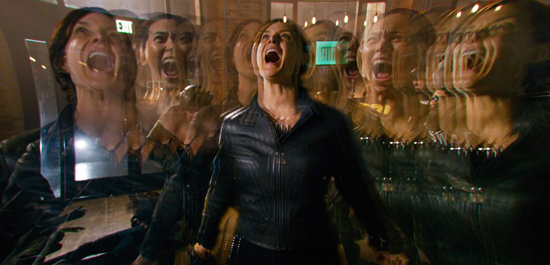
THE MATRIX RESURRECTIONS (2021)
A lot happened in the 18 years since the Matrix trilogy came to a close. Perhaps the most astonishing change came with the Wachowskis themselves. Originally known as the Wachowski Brothers during the making of the original trilogy, the duo surprised everyone by coming out as transgender over the span of a couple of years. First Lana made the big step during the making of their epic film production Cloud Atlas (2012), and a couple years later Lilly would make the transition as well. One thing that the Wachowski sisters revealed during their public announcements was that working on The Matrix was instrumental in helping them grow more comfortable in expressing who they really were and gave them the drive to transition in front of the world and set an example. They confirmed the theory that their trilogy was a metaphor for transitioning, as Neo and the other humans shed the programmed life they knew before and embraced and fought for the identity that they knew to be true. Sadly, that theory is one that many in the Matrix fandom rejected outright; a fandom that unfortunately turned toxic in the two decades since the movies released. This is likely what prompted Lana Wachowski to step forward to make a fourth film on her own. Too many people had been co-opting The Matrix and all of it’s quotes and iconic scenes for their own toxic ideologies, and Lana wanted to reclaim some of that legacy back. Working solo without Lilly, Lana Wachowski managed to get the greenlight from Warner Brothers for a fourth film. What likely helped to move the project forward was Keanu Reeves having a career resurgence thanks to the John Wick films, and having him return to the role of Neo was too good to pass up. Carrie Anne Moss also thankfully agreed to return, though they were unfortunately without Laurence Fishburne, so Yahya Abdul-Mateen II stepped into the role instead. The film unfortunately ran into trouble with the Covid-19 pandemic delaying it’s release, and sadly it was one of the films undercut by Warner Brother’s disastrous decision to release all of their 2021 films in both theaters and streaming day and date.
The resulting film is certainly a mess and very much doesn’t re-capture the magic of the first film. But, it’s also the most fascinating film in the series since the original, and that’s largely due to what Lana Wachowski did with the movie. The film is less of a continuation of the Matrix trilogy and more of a meta commentary on not just toxic Matrix fandom but also of the corporatization of franchises in general. Neo finds himself back in the Matrix, after having seemingly dying in the fight with Smith at the end of Revolutions. Not only that, but he has no memory of before and works as a video game developer. In this life, he has created a successful trilogy of games called “The Matrix,” and as his boss (played by Jonathan Groff) says to him, “our parent company Warner Brothers is demanding a sequel.” You could say that Lana is biting the hand that feeds her, and that’s probably the point. She also takes aim at people who misinterpret the meaning behind The Matrix, getting all of the philosophical questions wrong and using the Matrix as an excuse to justify their own toxic ideas. There is a story in this film, with newly resurrected Neo trying to bring Trinity back to reality, but it seems like it’s just there to get the movie rolling to what Lana Wachowski really wants to say with this movie. In the 18 years, she has seen her films be co-opted by bad faith actors who misquote and reference the original films all the time in the online atmosphere. The utilization of the red pill metaphor as a recruitment message for online right wing agitators must really upset Lana, given that so many in that community are actively hostile to the transgender community. By calling out the misuse of her movies and in turn deconstructing the legacy of The Matrix as a whole, it’s as if Lana Wachowski is purposely burning down the house she built so that the wrong kind of people cannot make a home in it. It makes Matrix Resurrections not very good as a continuation of the Matrix series, but in turn it’s also a brave defiant statement against the reality of toxic fandoms, and honestly I respect the hutzpah it took to make a movie like this.
So, it may not be the perfect series that many had wished for with the promise of the original movie, but there is no denying that The Matrix is one of the most monumental cinematic statements we’ve ever seen committed to celluloid. The Wachowski Sisters had a bold vision that could not be easily categorized, and yet it found it’s audience and forced a change within the industry as a result. Even to this day one can’t think of a more iconic image in cinema than that of Keanu Reeves in the black trench coat and shades bending over backwards to dodge the bullets in slow motion. What really helped to define The Matrix the most was it’s bold experimentation. It dared to be different in every way, both in visuals and in it’s story-telling. It was also a big budget action film that also dared to ask bold philosophical questions. For the Wachowskis, it was also a bold expression of the challenges they were facing in finding their true selves, and thankfully they have remained powerful voices in the transgender community. The two sequels from 2003 may be a perfect example of how the pressure to build a franchise out of something that defied conventional wisdom in the first place often leads to disappointing results. Reloaded and Revolutions are by no means the worst sequels ever made, and often they have moments that really shine; but they are also rudderless and conventional in ways that the original was not, and that’s likely the thing that led them to be disappointments in the end. On the surface, The Matrix Resurrections seems to be a shameless cash grab, and it is for the most part, but Lana Wachowski utilizes her moment with the film to air our her frustrations at all of the pseudo-intellectuals who misquote her film all the time online, and it kind of gives Resurrections this hidden subversive element to it that I kinda love. Lana probably saw too many “red pill” tweets from Elon Musk and wrote this movie as a cinematic middle finger to faux “geniuses” like him who proclaim to know the “truth” of the Matrix. There’s a lot to say about the Matrix movies, and there will likely be debates that will happen for as long as there is discourse about cinema, but it’s a series that for the most part helped to push the movies in the right direction. Having an action film that made you think was definitely something desperately needed going into the new millennium, and while many may have taken the wrong message from the movies, another large part of the fandom has picked up from it’s example and strived to make better action movies that were more than mindless entertainment. We certainly wouldn’t have gotten to John Wick had Neo never worked on the big screen. The Matrix is a lot of things, and all of it is enough to make you go, “Whoa.”

